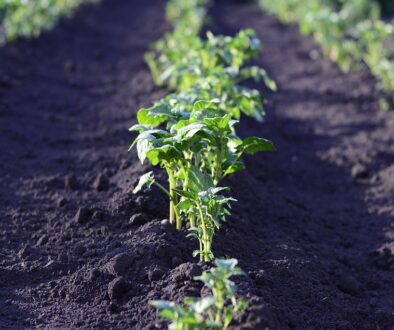Turning Trash into Treasure: The Art of Composting
Article by: Suzette Morshead
In an age where environmental awareness is more pressing than ever, one of the simplest yet most effective practices we can adopt is composting. This art of turning organic waste into nutrient-rich soil doesn’t just minimize waste; it profoundly enhances our gardening efforts and contributes to environmental health. In this article, we’ll explore the benefits of composting, share a personal transformation story, and provide a comprehensive list of supplies you need to start your composting journey.
The Benefits of Composting
Composting is not merely a way to dispose of organic waste; it’s an opportunity to engage with the ecosystem in a meaningful way. Here are some compelling reasons to consider starting your composting journey:
1. Reduces Landfill Waste
Each year, billions of tons of organic waste end up in landfills, creating methane, a greenhouse gas significantly more potent than carbon dioxide. By composting, we can divert a sizable portion of this waste, reducing our carbon footprint.
2. Boosts Soil Health
Compost enriches the soil with nutrients, improving its texture and overall health. Healthy soil means thriving plants, which, in turn, means healthier produce for you and your family.
3. Saves Money
By creating your own compost, you reduce the need for chemical fertilizers and soil conditioners. This can lead to significant savings over time, particularly for avid gardeners.
4. Embraces Sustainability
Composting embodies the principles of sustainability by closing the loop of food production and waste. It teaches us about the lifecycle of organic matter and promotes a deeper connection with the environment.
A Personal Journey: My Composting Transformation
A few years back, I was a nervous novice in the world of gardening. My garden, though ambitious, was struggling. I continually battled pests and poor soil quality, frustrated as I watched my plants wilt instead of thrive. One day, while researching gardening tips, I stumbled across the concept of composting. Intrigued by the idea of creating my own nutrient-rich soil, I decided to give it a try.
At first, I collected kitchen scraps in a small container—fruit peels, coffee grounds, and vegetable trimmings would pile up on my kitchen counter. Initially, it felt overwhelming, watching trash become a mound of unsightly leftovers. But under the guidance of various online resources and several Pinterest boards, I set up my first compost bin in the corner of my yard.
I invested in a simple turning compost bin and began as anyone would, adding the green (Nitrogen-rich) materials like vegetable scraps and grass clippings, followed by brown (Carbon-rich) materials such as fallen leaves and cardboard. Each week became a small ritual—turning the compost, feeling the temperatures rise, and waiting patiently as the organic matter began to decompose.
Weeks turned into months, and my patience finally bore fruit (quite literally). When I opened the compost bin, I was presented with dark, crumbly, nutrient-dense soil. The transformation was nothing short of magical; it felt like unearthing buried treasure. I used the compost in my garden, and the difference was astounding—plants flourished, pests were less of a problem, and I felt a sense of pride in my sustainable contribution.
Composting has not only improved my garden but also reinforced a sense of community and environmental responsibility. I often share my compost with neighbors and use it in local school gardening projects—turning my small contribution into collective growth.
Supplies Needed for Successful Composting
Ready to embark on your composting journey? Here’s a list of essential supplies to get you started:
1. Compost Bin
- Types: You can choose between a tumbler, a traditional bin, or a homemade option from wood or wire fencing. Make sure it has good airflow.
2. Kitchen Scraps Container
- Use a small container or bin to easily collect and transport kitchen waste. Look for one with a lid to minimize odors.
3. Brown and Green Materials
- Greens: Vegetable scraps, grass clippings, coffee grounds, eggshells.
- Browns: Dried leaves, cardboard, paper, straw.
4. Garden Fork or Compost Aerator
- Essential for turning and aerating your compost to promote decomposition.
5. Moisture Meter (Optional)
- Helps you monitor the moisture levels in your compost, ensuring optimal decomposition.
6. Compost Thermometer (Optional)
- Allows you to monitor the internal temperature of your compost, ensuring the materials are decomposing efficiently.
7. Shredding Tool
- A shredder or scissors can help break down larger materials like branches and cardboard to speed up the composting process.
8. Watering Can or Hose
- A method for adding moisture when needed, ensuring that your compost stays damp (but not soggy).
Conclusion
Composting is indeed the art of turning trash into treasure. It’s a simple act that can transform organic waste into nutrient-rich soil while contributing positively to our planet. My personal journey into composting was initially motivated by a desire to enhance my gardening and, over time, has developed into a profound respect for the environment.
To those contemplating starting their own composting journey: embrace it! With each kitchen scrap and yard waste you compost, you’ll not only reduce landfill waste but also watch your garden—and your relationship with the environment—flourish. Start today, and you may just discover your own treasure along the way. Happy composting!
Turning Trash into Treasure: The Art of Composting
Article by: Suzette Morshead


